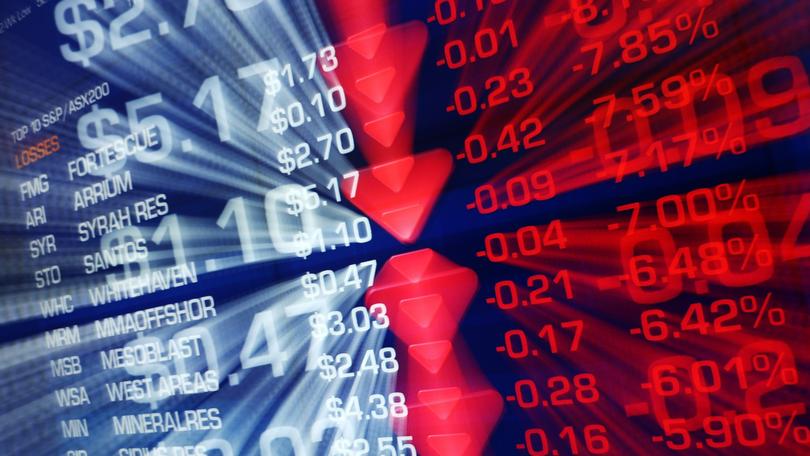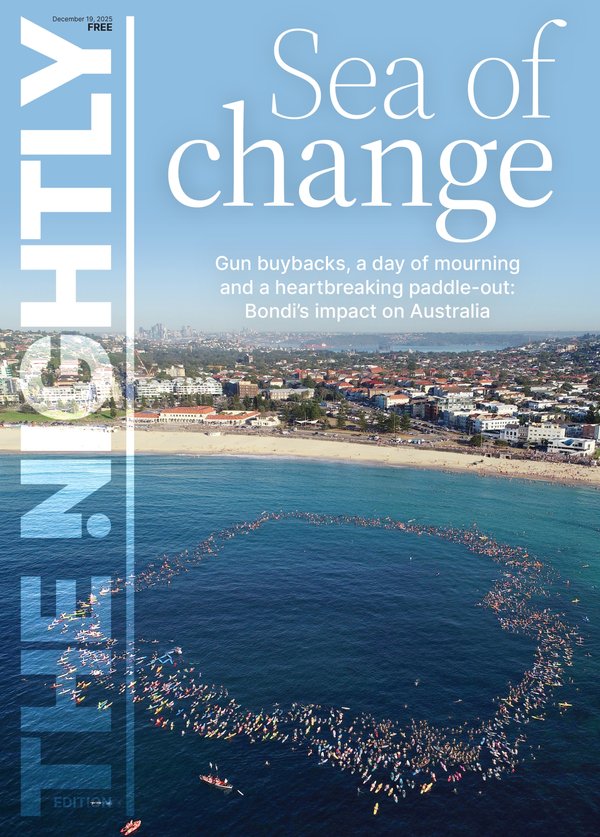Donald Trump tariffs: Investors bolt as US President’s reciprocal global tariffs drop a bomb on ASX200

The local share market has staged a solid recovery following an initial $55 billion selldown at the opening bell after President Donald Trump revealed Australia would cop a 10 per cent tariff blow on all good imported into the US.
Continuing a roller-coaster ride for the leading index over the past few weeks as investors braced for the fallout of the looming impost, the S&P-ASX200 dropped more than 2 per cent to 7772.50 points — down 162.80 — after the first 30 minutes as it tested 12-month lows last seen two weeks ago.
But a rally mid-session — spurred on by a return to consumer staple stocks — brought it back from the brink and managed to pare losses to just over one per cent by 11.50am
Sign up to The Nightly's newsletters.
Get the first look at the digital newspaper, curated daily stories and breaking headlines delivered to your inbox.
By continuing you agree to our Terms and Privacy Policy.The other 10 sectors remained a sea of red, with IT stocks leading the rout, down almost 3 per cent. Real estate, energy, mining, banking and industrial stocks all remained deep in negative territory.
Gold miners were the only big winners as the precious metal climbed again to set a new record price on safe haven demand to reach $US3160 an ounce.
Ramelius Resources jumped 5 per cent while De Grey Mining, Spartan Resources, Westgold Resources all posted solid gains and made it into the top five best-performing stocks.
Bullion was one of the few commodities exempted from the tariffs.
Investors regard gold as a haven when concerns rise over the health of the global economy. Such worries have lifted the yellow metal 20 per cent this year after a ferocious run in 2024.
Iron ore majors also took a hit on fears of the tariffs’ impact on Chinese demand for the steel-making commodity. Fortescue was off more than 2 per cent. More diversified players Rio Tinto and BHP also copped a backlash, with both down more than 2.5 per cent.
The sell-off on the ASX came just hours after Mr Trump announced sweeping tariffs that will hit economies around the globe, saying the US “has been looted, pillaged, raped, plundered” by other nations.
The measures threaten to upend much of the architecture of the global economy and trigger broader trade wars.
Markets had expected a 15 per cent ceiling on the so-called “Liberation Day” tariffs, which instead began with a 10 per cent minimum, a 34 per cent impost on China, 24 per cent for Japan and 20 per cent for the European Union.
Market analyst at eToro Josh Gilbert said Mr Trump’s “aggressive” tariff rollout was “arguably worse than feared” and would add more uncertainty to global markets, with stock futures deep in the red.
“While Australia has avoided severe direct impacts, it’s still exposed to the 10 per cent tariff slapped on all nations. Trump also noted that the US would stop importing Australian beef,” Mr Gilbert said.
“While Australia’s direct trade exposure to the US is minimal, the knock-on effects via China and broader Asian nations that have seen hefty tariffs could weigh on our export-heavy economy, especially if global demand slows and commodity prices retreat.
“For a small, open economy like Australia, any slowdown in global growth would have an impact locally.
Mr Gilbert said far harsher tariffs on China and Taiwan signalled early warning signs were flashing for the tech trade, especially major chip names.
“The best investors can hope for is that countries play ball and this doesn’t spiral into a full-blown trade war,” he said.
“There will be a big focus on earnings guidance and central bank responses. If it wasn’t already clear, today’s sharp sell-off in risk assets and the rush to safe havens show investors should prepare for ongoing volatility in the months ahead.”
Zenith Investment Partners’ Damien Hennessy the potential impact on the Asian region and global growth would have flow-on effects to the national economy, with the research house also increasing the probability of a US recession from 20 per cent to 35 per cent — “a level that cannot be ignored”.
IG Markets analyst Tony Sycamore agreed.
“My guess is we will very shortly see Goldman Sachs revise higher their 12-month estimate of a recession in the US from 35 per cent to 50 per cent,” Mr Sycamore said.
On the bright-side for borrowers, interest rate markets were now pricing in an 85 per cent chance of a 25 basis points rate cut at the Reserve Bank’s May meeting.
US markets are expected to fall when they open tonight, with S&P500 futures and Nasdaq futures sliding 1.6 per cent and 2.4 per cent as Mr Trump delivered his tariff speech.
